#jamaican culture
Text
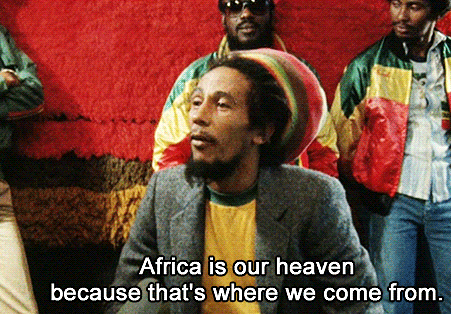
#bob marley#bob marley & the wailers#haile selassie#blackisbeautiful#blackmen#black activism#blackbeauty#blackmenkillingit#blacktivism#blackmusic#blackculture#jamaica#jamaican culture#rasta#rastaman vibration#reggae#rocksteady#reggae roots#locs#afrocentrichairstyles#afrocentric aesthetic#afrocentrism#panfricanism#for the culture#blackandproud#black consciousness#blackisavibe#blackpower#blacktumblr
703 notes
·
View notes
Text
Google's doodle for our Miss Lou's 103rd Birthday today (7 Sept 2022)
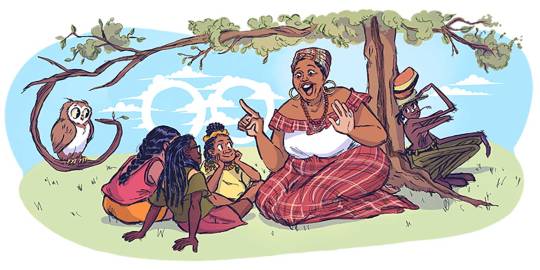
65 notes
·
View notes
Text
youtube
Schools in France Vs Schools In Jamaica
#cultureshock#jamaican culture#french culture#schoollife#school#youtuber#youtube#influenceur#youtubeur#influencer#romonwrites#content creator#Youtube
9 notes
·
View notes
Photo
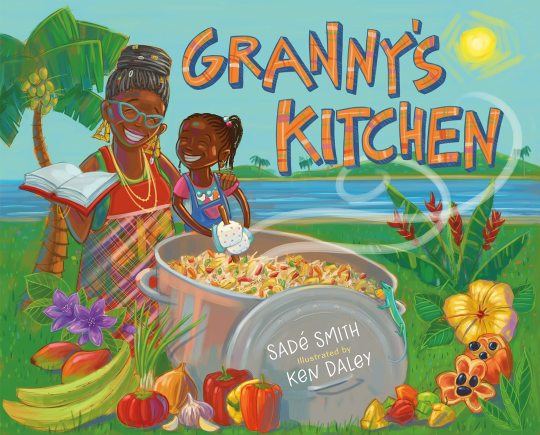
📢NEW Picture Book Alert
📖Granny's Kitchen
Sadé Smith
Ken Daley
Ages: 3 and up
Pages: 32
Feiwel and Friends
19 notes
·
View notes
Text
Romeich Major Clarifies Controversial Job Fair Entry Fee as Marketing Tactic
Businessman and artiste manager Romeich Major faced criticism for announcing a $1,000 entry fee for his job fair. He has now revealed that this was merely a marketing tactic, with no attendees being charged. Major defends his approach, emphasizing...
By FCFVA News Team
Romeich Major, a notable businessman and artiste manager based in Kingston, Jamaica, recently faced a wave of public criticism after announcing a $1,000 entry fee for his job fair. However, in a twist, Major has come forward to reveal that this fee was merely a strategic marketing move and was never meant to be collected from attendees.
Image of Romeich Major via Google…

View On WordPress
#employment opportunities#Jamaican culture#job fair#Kingston#marketing strategy#public backlash#Romeich Major
0 notes
Text
#jamaican culture#caribbean culture#cultural retention#cultural preservation#african diaspora#african american#diaspora discord
0 notes
Link
S E X Y P I N K
People's attitudes towards monuments and civic structures are based, to a great extent, on the actual and perceived baggage that comes with them. As symbolic entities, they tend to attract symbolic reactions and it is very important to understand what is being communicated, intentionally and otherwise, in those contexts. Generally, and that is the part the PM does not seem to grasp, such responses cannot be prescribed, but they must be acknowledged and understood.

Photo by Bryan Miller Prime Minister Andrew Holness (right) participates in the unveiling of a statue of National Hero Alexander Bustamante on the grounds of the Hanover Parish Library in Lucea on Friday. Als in photograph are Lucea Mayor Sheridan Samuels (left) and Minister of State Homer Davis. The Bustamante unveiling triggered a poltical firestorm on Twitter at the weekend, with rival supporters of the opposition People’s National Party and the governing Jamaica Labour Party trading insults over Bustamante and fellow National Hero Norman Manley, his cousin.
#sexypink/Jamaican culture#sexypink/Andrew Holness#sexypink/civics#sexypink/Jamaican monuments#tumblr/Jamaican culture#tumblr/Jamaican heritage#tumblr/Prime Minister Holness#Jamaican culture#Jamaican#Prime Minister Andrew Holness#values#infrastructure#civics
0 notes
Video

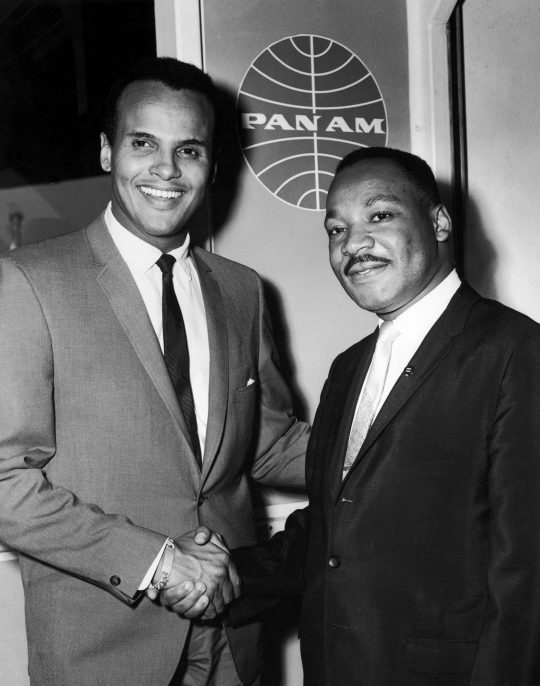

March 1st, 1927 - April 25, 2023
RIP to the great Harry Belafonte.
What a life.
Daylight come and me wan’ go home.
#Harry Belafonte#RIP#Black Culture#Civil Rights#MLK#Jamaican#Heart Failure#Banana Boat#Day-O#Music#Pioneer#Video#Inspiration#Activist
747 notes
·
View notes
Text


Afro-Jamaicans are Jamaicans of predominant African descent. They represent the largest ethnic group in the country.
The ethnogenesis of the African Jamaican people stemmed from the Atlantic slave trade of the 16th century, when enslaved Africans were transported as slaves to Jamaica and other parts of the Americas. During the period of British rule, slaves brought into Jamaica were primarily Akan, some of whom ran away and joined with Maroons and even took over as leaders
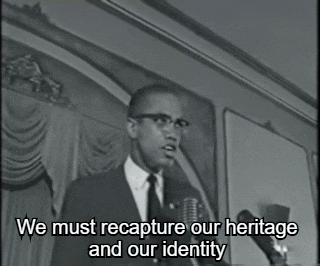
West Africans were enslaved in wars with other West African states and kidnapped by either African or European slavers. The most common means of enslaving an African was through abduction.

Based on slave ship records, enslaved Africans mostly came from the Akan people (notably those of the Asante Kotoko alliance of the 1720's: Asante, Bono, Wassa, Nzema and Ahanta) followed by Kongo people, Fon people, Ewe people, and to a lesser degree: Yoruba, Ibibio people and Igbo people. Akan (then called Coromantee) culture was the dominant African culture in Jamaica.
Originally in earlier British colonization, the island before the 1750s was in fact mainly Akan imported. However, between 1663 and 1700, only six per cent of slave ships to Jamaica listed their origin as the Gold Coast, while between 1700 and 1720 that figure went up to 27 per cent. The number of Akan slaves arriving in Jamaica from Kormantin ports only increased in the early 18th century. But due to frequent rebellions from the then known "Coromantee" that often joined the slave rebellion group known as the Jamaican Maroons, other groups were sent to Jamaica. The Akan population was still maintained, since they were the preference of British planters in Jamaica because they were "better workers", according to these planters. According to the Slave Voyages Archives, though the Igbo had the highest importation numbers, they were only imported to Montego Bay and St. Ann's Bay ports, while the Akan (mainly Gold Coast) were more dispersed across the island and were a majority imported to seven of 14 of the island's ports (each parish has one port).

Myal and Revival
Kumfu (from the word Akom the name of the Akan spiritual system) was documented as Myal and originally only found in books, while the term Kumfu is still used by Jamaican Maroons. The priest of Kumfu was called a Kumfu-man. In 18th-century Jamaica, only Akan gods were worshipped by Akan as well as by other enslaved Africans. The Akan god of creation, Nyankopong was given praise but not worshipped directly. They poured libation to Asase Ya, the goddess of the earth. But nowadays they are only observed by the Maroons who preserved a lot of the culture of 1700s Jamaica.
"Myal" or Kumfu evolved into Revival, a syncretic Christian sect. Kumfu followers gravitated to the American Revival of 1800 Seventh Day Adventist movement because it observed Saturday as god's day of rest. This was a shared aboriginal belief of the Akan people as this too was the day that the Akan god, Nyame, rested after creating the earth. Jamaicans that were aware of their Ashanti past while wanting to keep hidden, mixed their Kumfu spirituality with the American Adventists to create Jamaican Revival in 1860. Revival has two sects: 60 order (or Zion Revival, the order of the heavens) and 61 order (or Pocomania, the order of the earth). 60 order worships God and spirits of air or the heavens on a Saturday and considers itself to be the more "clean" sect. 61 order more deals with spirits of the earth. This division of Kumfu clearly shows the dichotomy of Nyame and Asase Yaa's relationship, Nyame representing air and has his 60 order'; Asase Yaa having her 61 order of the earth. Also the Ashanti funerary/war colours: red and black have the same meaning in Revival of vengeance. Other Ashanti elements include the use of swords and rings as means to guard the spirit from spiritual attack. The Asantehene, like the Mother Woman of Revival, has special two swords used to protect himself from witchcraft called an Akrafena or soul sword and a Bosomfena or spirit sword

Jamaican Patois, known locally as Patwa, is an English creole language spoken primarily in Jamaica and the Jamaican diaspora. It is not to be confused with Jamaican English nor with the Rastafarian use of English. The language developed in the 17th century, when enslaved peoples from West and Central Africa blended their dialect and terms with the learned vernacular and dialectal forms of English spoken: British Englishes (including significant exposure to Scottish English) and Hiberno English. Jamaican Patwa is a post-creole speech continuum (a linguistic continuum) meaning that the variety of the language closest to the lexifier language (the acrolect) cannot be distinguished systematically from intermediate varieties (collectively referred to as the mesolect) nor even from the most divergent rural varieties (collectively referred to as the basilect). Jamaicans themselves usually refer to their use of English as patwa, a term without a precise linguistic definition.
Jamaican Patois contains many loanwords of African origin, a majority of those etymologically from Gold Coast region (particularly of the Asante-Twi dialect of the Akan language of Ghana).
Most Jamaican proverbs are of Asante people, while some included other African proverbs

Jamaican mtDNA
A DNA test study submitted to BMC Medicine in 2012 states that "....despite the historical evidence that an overwhelming majority of slaves were sent from the Bight of Biafra and West-central Africa near the end of the British slave trade, the mtDNA haplogroup profile of modern Jamaicans show a greater affinity with groups found in the present-day Gold Coast region Ghana....this is because Africans arriving from the Gold Coast may have thus found the acclimatization and acculturation process less stressful because of cultural and linguistic commonalities, leading ultimately to a greater chance of survivorship and a greater number of progeny."
More detailed results stated: "Using haplogroup distributions to calculate parental population contribution, the largest admixture coefficient was associated with the Gold Coast(0.477 ± 0.12 or 59.7% of the Jamaican population with a 2.7 chance of Pygmy and Sahelian mixture), suggesting that the people from this region may have been consistently prolific throughout the slave era on Jamaica. The diminutive admixture coefficients associated with the Bight of Biafra and West-central Africa (0.064 ± 0.05 and 0.089 ± 0.05, respectively) is striking considering the massive influx of individuals from these areas in the waning years of the British Slave trade. When excluding the pygmy groups, the contribution from the Bight of Biafra and West-central rise to their highest levels (0.095 ± 0.08 and 0.109 ± 0.06, respectively), though still far from a major contribution. When admixture coefficients were calculated by assessing shared haplotypes, the Gold Coast also had the largest contribution, though much less striking at 0.196, with a 95% confidence interval of 0.189 to 0.203. When haplotypes are allowed to differ by one base pair, the Jamaican matriline shows the greatest affinity with the Bight of Benin, though both Bight of Biafra and West-central Africa remain underrepresented. The results of the admixture analysis suggest the mtDNA haplogroup profile distribution of Jamaica more closely resembles that of aggregated populations from the modern-day Gold Coast region despite an increasing influx of individuals from both the Bight of Biafra and West-central Africa during the final years of trading enslaved Africans.
The aforementioned results apply to subjects whom have been tested. Results also stated that African Jamaicans (that make up more than 90% of the population) on an average have 97.5% of African MtDNA and very little European or Asian ancestry could be found. Both ethnic and racial genetic results are based on a low sample of 390 Jamaican persons and limited regional representation within Jamaica. As Afro-Jamaicans are not genetically homogeneous, the results for other subjects may yield different results.
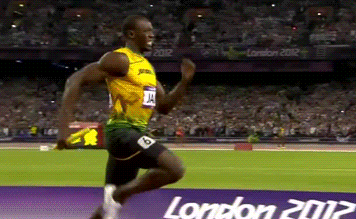
#african#afrakan#kemetic dreams#africans#brownskin#brown skin#afrakans#african culture#afrakan spirituality#asante#jamaican#benin#bight of biafra#gold coast#mtdna#afro jamaicans#twi#west africa#africa#algeria#uganda#ethiopia#ghana#myal#rastafari#rasta#rastaman#rasta love#kisumi amau#tegan and sara
86 notes
·
View notes
Text
#bob marley & the wailers#war#rastaman vibration#haile selassie#bobmarley#blackisbeautiful#blackmen#black activism#blackbeauty#blackmenkillingit#blacktivism#blackmusic#blackculture#jamaica#jamaican culture#rasta#reggae#rocksteady#reggae roots#locs#afrocentrichairstyles#afrocentric aesthetic#afrocentrism#panfricanism#for the culture#blackandproud#blackisavibe#blackpower#blacktumblr
688 notes
·
View notes
Text

#louise bennett#miss lou#louise bennett coverely#jamaican poet#jamaican culture#philately#jamaican stamp#postage stamp
18 notes
·
View notes
Text
youtube
Jamaican Proverbs and Sayings
#youtuber#youtube#youtubeur#influenceur#influencer#romonwrites#content creator#jamaican culture#jamaican patois#jamaica#jamaican#Youtube
1 note
·
View note
Text

Young teenage boy who, just arrived from Jamaica, shows off his latest reggae dance with his younger brother watching, Brixton Hill. 1968
Ph: Neil Kenlock
#Brixton#United Kingdom#London#England#Jamaican#Youth#African Descent#African Diaspora#Culture#History#Windrush#Raggae
32 notes
·
View notes
Text
Jamaican Sound Clash Culture
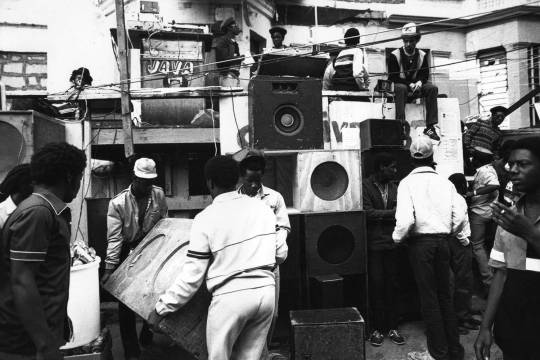
Jamaican sound clash culture has its roots in the 1950s and 1960s, when sound systems first began to emerge in Jamaica. These sound systems were essentially mobile DJ setups that would play music at outdoor parties, dances, and other events. They were an important part of the local music scene, and helped to popularize a variety of different genres, including ska, rocksteady, and reggae.
As the popularity of sound systems grew, so too did their competitiveness. DJs and sound system operators began to engage in battles or "clashes" where they would compete against one another to see who had the best music selection, sound quality, and overall performance. These clashes often took place in outdoor venues and were attended by large crowds of people who would dance and cheer on their favorite sound systems.
In the 1970s, sound clash culture really took off in Jamaica, as a new generation of sound system operators emerged, including some of the most famous names in the business, such as King Tubby, Duke Reid, and Coxsone Dodd. These sound systems were known for their powerful sound systems, huge music collections, and their ability to engage in quick-witted banter and insults, known as "dubplate specials."

During this time, sound clash battles became more intense and competitive, with sound system operators often spending large sums of money on rare and exclusive records and dubplates in order to gain an edge over their rivals. These battles became a major part of Jamaican culture, with fans and enthusiasts following their favorite sound systems and DJs around the country to attend clashes and other events.
In the 1980s, sound clash culture began to spread beyond Jamaica and into other parts of the world, as Jamaican immigrants brought the tradition with them to cities like New York, London, and Toronto. Today, sound clash culture continues to thrive in Jamaica and around the world, with new generations of sound system operators and DJs carrying on the tradition and keeping the spirit of competition and creativity alive.
youtube
The rivalry between sound systems is intense and the rules dictate that only exclusive dubplates are played, which are usually rare or specifically cut for the clash. These dubplates are unique cuts of certain popular tunes or other material. Watching a sound clash is good fun and the audience decides who is better by cheering the most, and the energy is usually insane. In this case, Rodigan acts as both his own DJ and MC, but sometimes other MCs are present and the selecta (DJ) is separate. In Jamaica, the MCs are called deejays and the DJs are called selectas. Sometimes there are even special dancers on stage to make the show even more energetic.
Sound systems in Jamaica were popular because people couldn't afford to buy records or speakers, so they would play music in the streets for everyday people. Then, they began to develop a rivalry and a following. It got crazy in the 80s when dancehall became harder and more violent in its lyrics. The sound clash is all about who has the best records, rarest collection, and most unique dubplates cut by artists. The artists usually voice a special message into the dubplates, hyping up the selecta/sound system. Hip hop may have also copied some of this culture, but it's not clear whether it developed on its own or was copied from Jamaica.
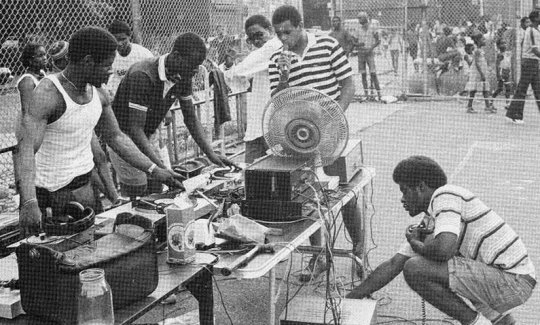
185 notes
·
View notes
Text
Okay so ok there’s the whole demons speaking every language automatically so you can’t insult them in like Spanish or anything BUT I only see white languages present would they understand like French creole or know the differences between Trinidadian patois and Jamaican patois?👀 or would they be completely stumped bc I really doubt satan would understand what my grandma is saying and even then a heavy accent? Yeah no google translate ain’t saving them😂
#Solomon is Jamaican for this reason only#my fav white man#and he’s now my mortal enemy on principal#😔sorry king I can’t betray my people like that#if you’re Trinidadian you will understand#obey me x reader#omswd x reader#obey me shall we date#obey me x black reader#Lucifer x black reader#diavolo obey me#mammon obey me#ik dia and mams might understand but culturally they are stumped#Simeon can be apart if the cool kids club as a treat#mayhaps Luke bc a little white baby yelling in patois would he hilarious especially in the kitchen#barbatos understands tone and body language so he’s fine most of the time#x black reader#obey me x mc#demon brothers
272 notes
·
View notes
